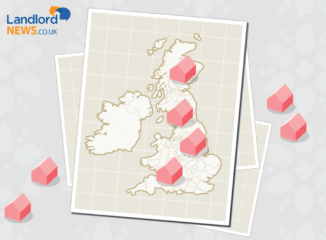Scotland’s best performing property markets and busiest areas for estate agents
Scotland’s best-performing property market is in Argyll & Bute, says estate agent comparison site GetAgent.co.uk.
GetAgent has analysed the housing market of mainland Scotland and found that the nation’s best-performing pocket of the property market, based on average house price increases in the past year, is in the western region of Argyll & Bute.
Mainland Scotland’s overall average house price has increased by 7.3% in the past year. Growing from £178,865 in September 2021 to £191,941.
In Argyll & Bute, the current average house price is £206,735 following growth of 25% since last year when the average price was £165,416.
In West Lothian, the analysis has found agents are currently achieving prices 15.7% higher than last year, with the average price rising from £189,322 to £219,002.
Prices in Dumfries & Galloway have increased by 12.9%, with an average of £165,011, while East Dunbartonshire (12.6%), North Ayrshire (12.5%), and East Ayrshire (12.2%) have also performed well.
GetAgent has found the worst performing market in the past year is the City of Aberdeen where prices have decreased by -2.4%, falling from £148,697 to £145,153. While this is the only area to see negative growth, growth has also been relatively slow in Aberdeenshire (1.9%), Clackmannanshire (4.3%), and Edinburgh (6.8%).
Scotland’s busiest areas for agent activity
The research shows that there are 1,421 estate agents and 32,951 property listings across seven major Scottish cities. This means each agent is currently handling an estimated 23.2 listings each.
On this basis, Scotland’s busiest agents are in Glasgow. The city has 448 agents and 6,890 current listings which equates to 15.4 properties per agent.
In Edinburgh, there are 260 agents and 3,298 listings. This means that each agent is handling 12.7 properties, while agents in Inverness (6.7), Aberdeen (6.5), Dundee (6.0), Perth (5.3), and Stirling (2.1) have relatively lighter workloads.
Colby Short, CEO and co-founder of GetAgent.co.uk, comments: “The Scottish housing market has been thriving in recent years and the widespread annual price rises displayed in this data are proof of that. With ten regions showing price rises of 11% or more, it’s clear that the appetite for Scottish homes is high.
“Scottish homes are not only attracting existing Scottish residents but also a large swathe of buyers who are looking to move to the country from other parts of Britain, not least England.
“Such buyers are being drawn by the lifestyle that Scotland offers, the relatively affordable house prices, and, perhaps, the potential for the country to gain full independence and reinsert itself as a member of the European Union.”





